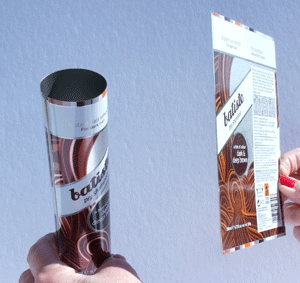
How do you turn a flat sheet of steel into a cylinder with a leak proof seam?
This is a close up of the seam.
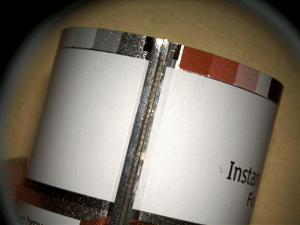
The solution is to weld the sheet edges together using electric current, as shown the the diagram below.. Two electrodes press against the steel, one from outside and one from inside. The electrodes are connected to a power supply that drives a huge current of up to 5000 Amps through the metal. This melts the two overlapping layers together. This is called
resistive welding. The current is pulsed at high frequency, one pulse for each spot or 'nugget' on the weld.
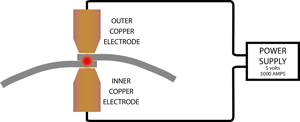
To make a long seam the electrodes need to be wheels to roll along the can.
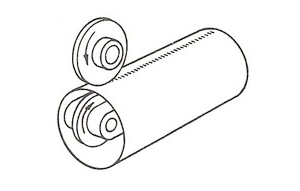 Image: spotweldinc.com
Image: spotweldinc.com
Making the perfect electrode wheel
For a perfect leak-proof welded seam the electrode wheels must also be perfect. After only one turn a copper wheel would pick up blobs of molten metal and be useless. The solution is to run copper wire round the wheels that is never re-used. The copper is recycled and made into new wire so the cost is reduced. You can see the copper wire in the second video.
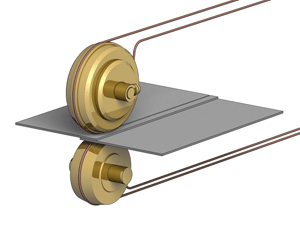
Image: mechanicalengineeringblog.com
The copper wire always presents perfect new electrode surfaces as it is
only used once. Getting the inner wheel into the inside of the can is
not so easy as the can is moving in one direction. The trick is to curl the can into a cylinder just before it gets to the wheels.
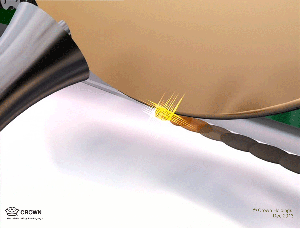
Image: Crown Holdings
Close up of the weld. There is a "nugget" for each pulse of current. The nuggets must just overlap. The slightest gap would cause a leak. Engineers regularly inspect the welds with a microscope.
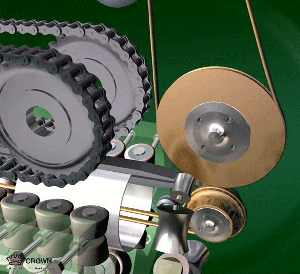
Image: Crown Holdings
A can approaches the wheels from the left. It has just been curved around the inner wire.
Hiding the seam
The seam on steel cans is a problem for can designers. The can is printed when it is flat sheet and then bent and welded. As ink is an insulator it must not cover the seam because it will stop the welding current from flowing though the sheet metal. This leaves an unprintable stripe on the can.
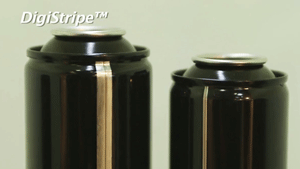
Image: Colep
Engineers have managed to reduce the width of the stripe from 5mm to
1.5mm. Now that you have seen how the seam is made you can see that this
is a big precision engineering achievement.